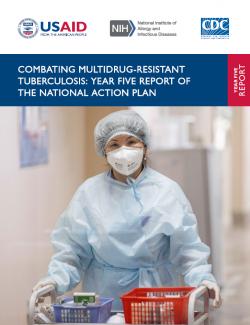Despite being preventable and curable, tuberculosis (TB) is one of the leading infectious disease killers, alongside COVID-19. In 2020, COVID-19 and associated measures to control it severely disrupted TB diagnosis and care services in the world’s highest TB burden countries, threatening to reverse years of progress. In that year, an estimated 9.9 million (estimated range, 8.9–11.0 million) people fell ill with TB, and 1.5 million (estimated range, 1.3–1.5 million) died as a result.
TB is caused by Mycobacterium tuberculosis (Mtb), a bacterium that is transmitted through the air from person to person. It is present in every country in the world, including the United States, which reported 7,174 cases of the disease in 2020.2 While TB is curable, treatment is lengthy (at least six months) and requires multiple drugs; failure to treat the disease properly can lead to drug-resistant TB (DR-TB).
DR-TB refers to TB that is resistant to at least rifampicin (RR-TB), one of the most effective drugs required to treat TB. Multidrug-resistant TB (MDR-TB) is resistant to both isoniazid (the second-most vital drug) and rifampicin. Extensively drug-resistant TB (XDR-TB) is resistant to both rifampicin and isoniazid and other drugs used to treat MDR-TB. Developing any type of DR-TB often has devastating effects on not only the individuals with the disease, but also their families and communities. Those who suffer from DR-TB endure long, complicated, and toxic regimens; the fear of potentially transmitting the disease to loved ones; and income loss due to illness, isolation, and stigma. Beyond these devastating personal impacts, DR-TB poses a significant global health security threat to populations in the highest TB burden countries. DR-TB outbreaks wreak havoc on national economies and health care systems due to high treatment costs and the strain the disease puts on communities, families, and providers.

